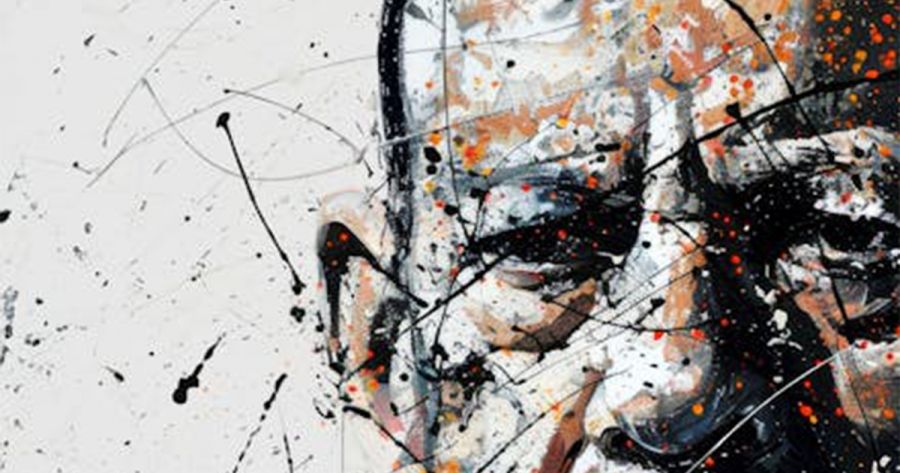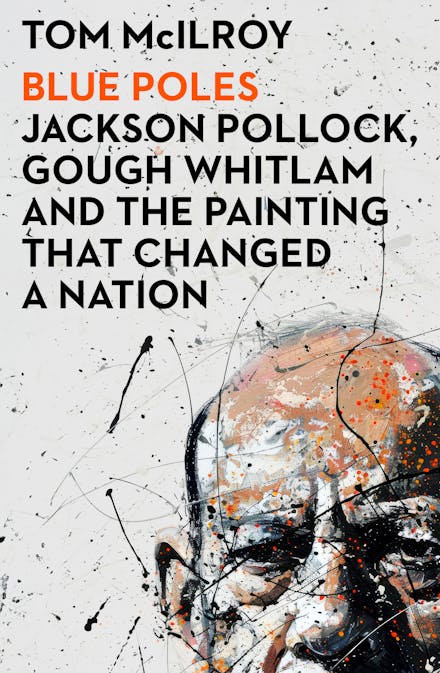
- Free Article: No
- Contents Category: Art
- Review Article: Yes
- Article Title: A freak in a sideshow
- Article Subtitle: The story behind that painting
- Online Only: No
- Custom Highlight Text:
This book is welcome. The purchase of Blue Poles, the most expensive American painting ever bought by an Australian gallery – for more than US$2 million in 1973 – brought into focus a range of Australian cultural and political attitudes of the 1970s. But what are we to make of the subtitle? Was Blue Poles really ‘the painting that changed a nation’?
- Featured Image (400px * 250px):

- Alt Tag (Featured Image): Jacqueline Kent reviews ‘Blue Poles: Jackson Pollock, Gough Whitlam and the painting that changed a nation’ by Tom McIlroy
- Book 1 Title: Blue Poles
- Book 1 Subtitle: Jackson Pollock, Gough Whitlam and the painting that changed a nation
- Book 1 Biblio: Hachette, $34.99 pb, 280 pp
- Book 1 Cover Small (400 x 600):

- Book 1 Cover (800 x 1200):

- Book 1 Readings Link: https://www.readings.com.au/product/9780733651960/blue-poles--thomas-mcilroy--2025--9780733651960#rac:jokjjzr6ly9m
In his early career, Pollock was helped enormously by Franklin Roosevelt’s Public Works of Art Project, part of the New Deal. Pollock began exhibiting his work in 1938, and the physicality and dynamism of his painting quickly attracted attention and approval. In 1943, he met fellow artist Lee Krasner; they married two years later. Both were driven artists and their marriage was a stormy one, its problems exacerbated by Pollock’s alcoholism and depression. Krasner, who considered her husband the greater artist, made her own work subservient to his. In 1956, at the age of forty-four, Pollock was killed in an alcohol-related traffic collision. His place was already secure in the pantheon of American art, and Krasner remained the keeper of the flame.
McIlroy provides a clear and conscientious summary of Pollock’s life, presumably for readers who know little about the artist and his work. Indeed, he spends almost forty per cent of the book on Pollock’s life and times. This is all very well, but it becomes increasingly frustrating. The author mentions modernism and abstract expressionism as if they are terms that are familiar to the reader: the names of artists and their works are set down flatly, without explanation of their distinguishing features, importance, or influence. Sure, the author is a journalist, not an art historian, but it would have been good to be told in more depth why Jackson Pollock and his contemporaries in the United States during the 1930s and 1940s were so revolutionary, how well their work was received, and by whom.
Considering the furore that the purchase of Blue Poles caused in this country, the book would also have benefited from some discussion of the Australian art scene at the time. Who were the well-known Australian artists, what were they producing, what were their ideas, and how was their work received? What support if any was given to Australian artists, and how did this compare to that received by their American counterparts? How well informed was Australia’s art establishment – curators, gallery owners, and artists – about trends from overseas? (For example, it would have been useful to include a brief description of Art Gallery of NSW’s director Hal Missingham’s attempts to educate the Australian gallery-going public, and he wasn’t alone.)
Blue Poles, painted in 1952 and considered by Pollock to be among his best work, does not really enter the story for more than a hundred pages. Even after that, it’s not exactly fast forward to the Australian purchase of the painting. Before we get there, McIlroy writes about the woes of the Whitlam government, though only as a quick precis, without much consideration of Gough Whitlam himself. It would have been good to point out that the purchase of Blue Poles – under the aegis of the prime minister, who appointed himself minister for the arts – was possibly the most spectacular example of Whitlam’s ‘crash through or crash’ mission of reforming and reframing Australia culturally, as well as in economic and legal terms.
McIlroy’s succinct description of Australian attitudes to the purchase of Blue Poles makes dispiriting reading. They could be summarised as: my four-year-old child could paint better; overseas art dealers took Australia to the cleaners; the money should have been spent on Australian works of art; the same amount would have purchased French impressionist paintings or Old Masters; for a government to spend this kind of money on such a terrible painting was ruinously frivolous. However, the painting’s champions were equally fierce. Patrick White wrote furiously to one critic that she was ‘the kind of person any creative Australian has been fighting against as long as I can remember, the aggressive philistine, often in disguise, who has held us back’. Even a brief comment about the way the Coalition’s dislike of the Whitlam government was weaponised by the acquisition of Blue Poles would have been helpful here.
Judging solely by this book, it would be easy to assume that Whitlam’s only claim to fame as a patron of the arts was his government’s purchase of Blue Poles. McIlroy does not mention the seed money the Whitlam government provided to increase funding for the Australia Council and the establishment of the Australian Film Commission, not to mention other initiatives, such as setting up the Australian Film and Television School, depoliticising the awarding of grants to writers and artists, or increasing mandatory requirements for Australian content on television. All these things, as well as the acquisition of Blue Poles, gave impetus to a new generation of artists – writers, painters, filmmakers, scriptwriters – whose work was crucial in developing Australia as a culturally mature nation.
The book is something of a missed opportunity, weakened not only by irrelevant information but also by lack of analysis and focus.


Comments powered by CComment